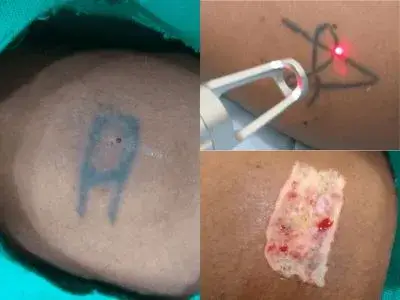Tattoos have been a part of cultural traditions for centuries, symbolizing identity, strength, and social status. Today, they are a popular form of self-expression, celebration, and tribute to loved ones. However, as life changes, so can our preferences, sometimes leading to the decision to remove a tattoo—whether due to personal reasons, professional requirements, or a change in identity.
If you’re considering tattoo removal, it’s normal to feel uncertain about the options available. Instead of relying on quick online searches, it’s best to consult a qualified dermatologist with expertise in cosmetic procedures. A specialist can guide you through the various permanent tattoo removal methods, helping you understand their benefits and risks to choose the most suitable option for you.
Permanent Tattoo Removal Procedures
Tattoos can be removed using either laser treatments or surgical methods, each with its own pros and cons. Here’s an overview of some common procedures:
Laser Tattoo Removal
Laser tattoo removal uses high-intensity laser beams to break down tattoo pigments into tiny particles, which are then gradually removed by the body’s immune system. The laser’s wavelength is chosen based on the color of the tattoo to achieve the best results.
Cosmetic Surgery To Remove a Tattoo
For faster results, surgical methods are an option, but they can leave scars. This should be considered only if you’re willing to accept this outcome. Below are some surgical methods:
Excision Surgery
This involves cutting out the tattooed skin and stitching the remaining skin back together. Smaller tattoos can be removed in a single session, while larger ones may need multiple sessions.
Dermabrasion
In this method, a specialized instrument is used to remove the upper layers of the tattooed skin. Other tools like a dermabrader or radio-frequency probes may also be used.
Salabrasion
This involves applying a saltwater solution to the tattooed area and scrubbing it with an abrasive tool until the skin turns deep red. This method is risky and can cause minor bleeding.
Cryosurgery
Also known as cryotherapy, this procedure involves applying liquid nitrogen to the tattooed area before removing the upper layers of skin.
Each method has its own set of benefits and risks. Consulting with a dermatologist will help you choose the best option for your unique needs.
